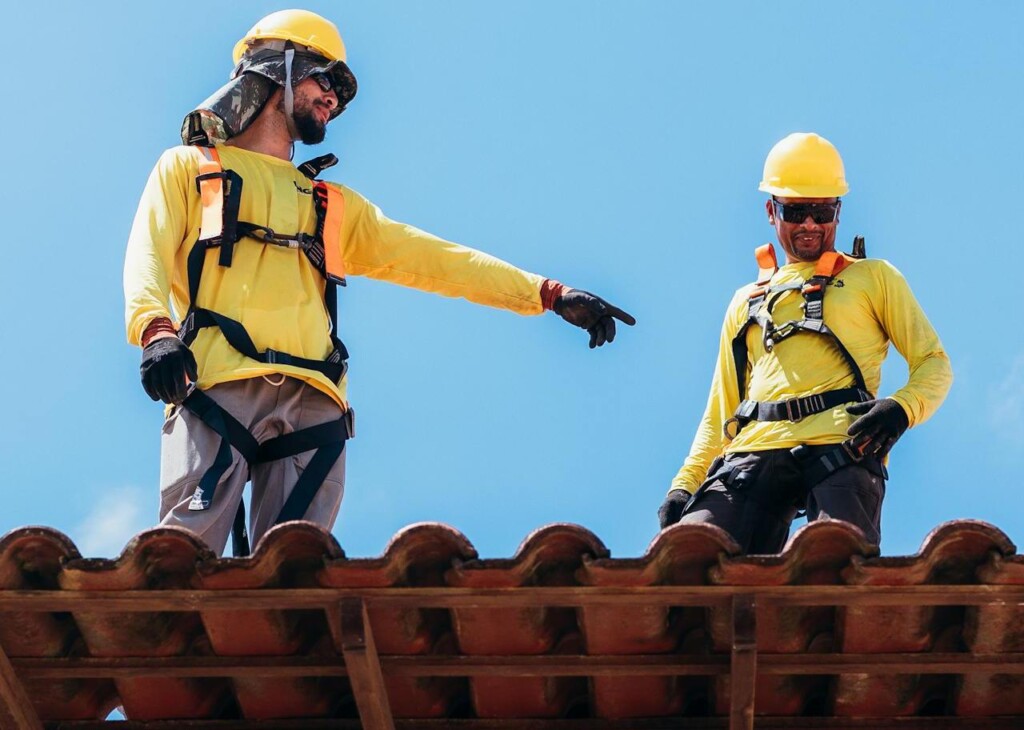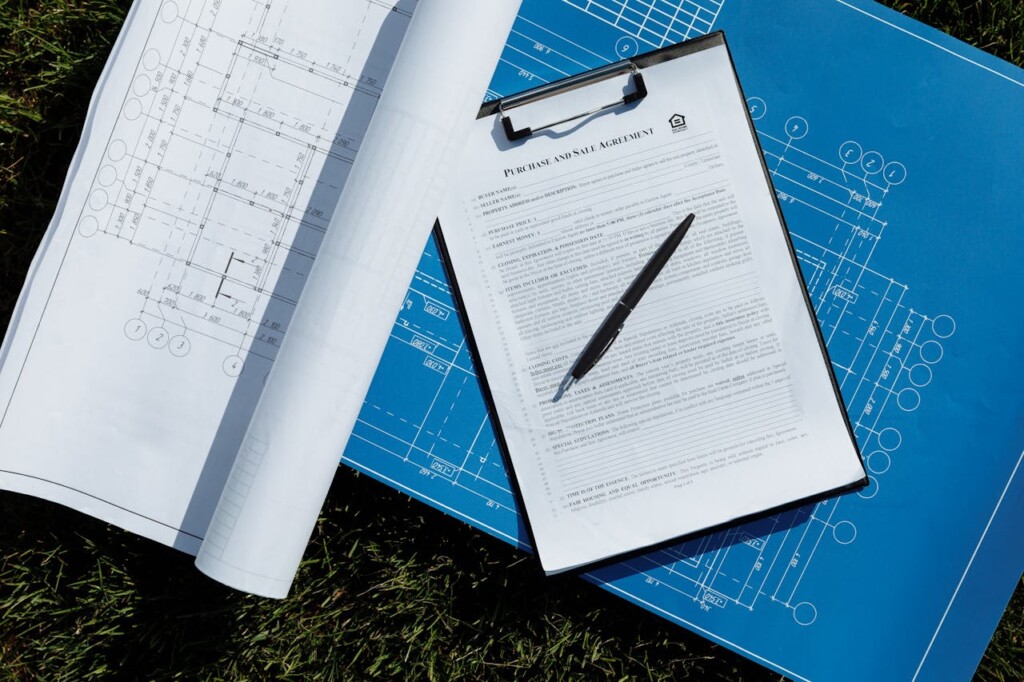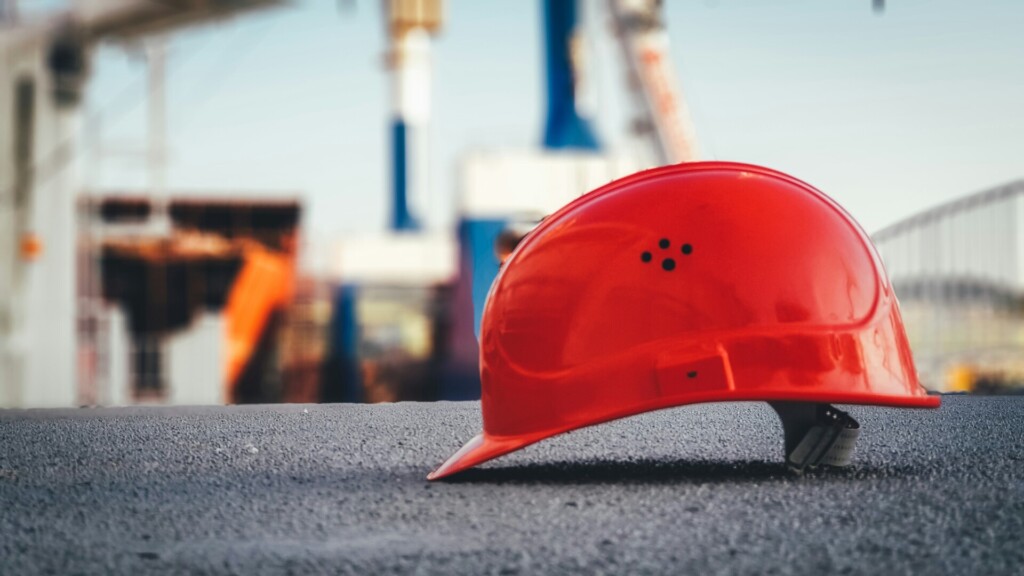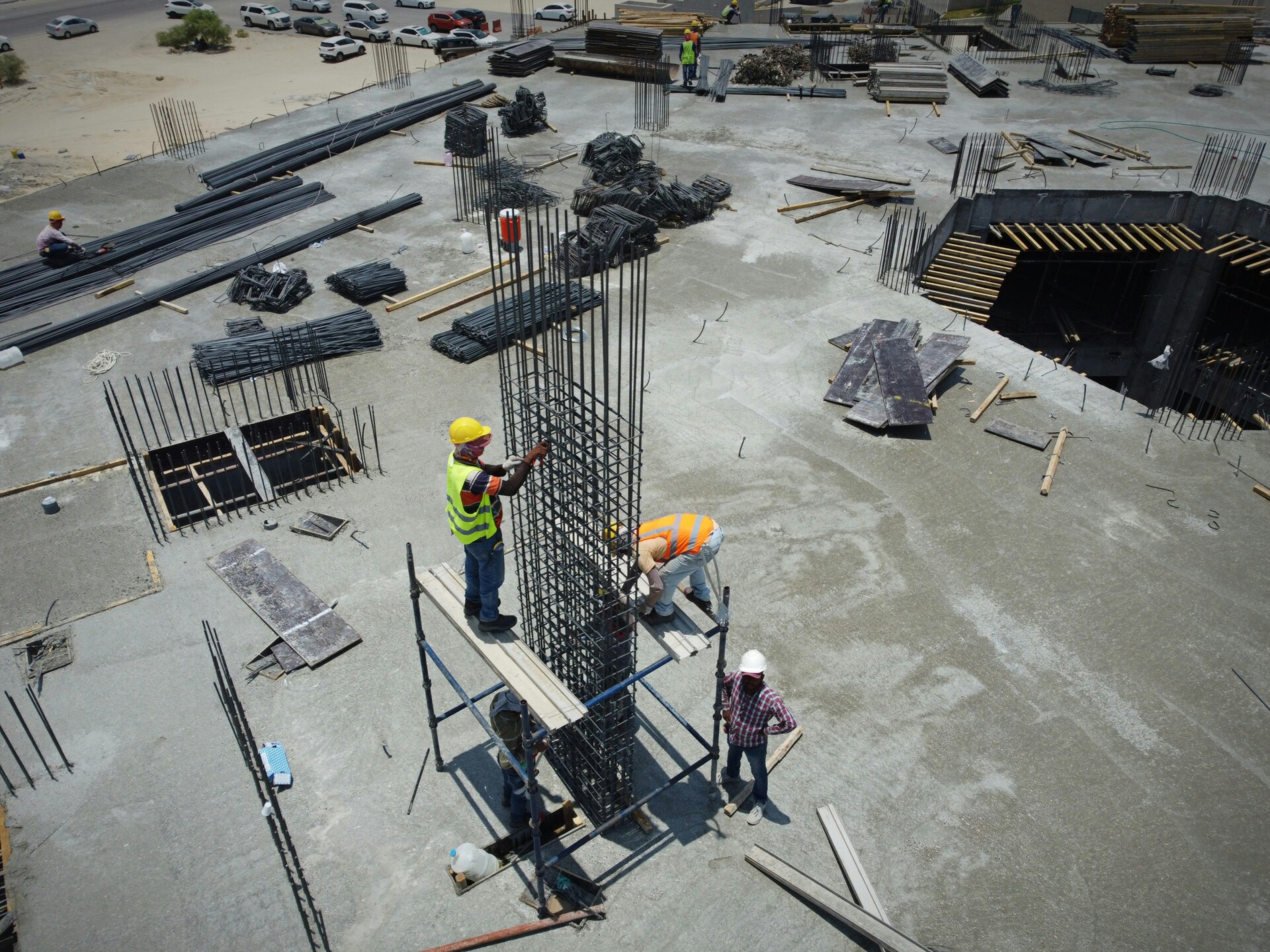A construction code of safe practices is a comprehensive set of jobsite rules designed to protect workers and the public from harm. This structured document serves as the foundation for maintaining safety standards throughout every phase of construction, from site preparation to project completion.
We align our construction code of safe practices with OSHA construction standards and incorporate any applicable local requirements to ensure complete regulatory compliance. The code transforms complex safety regulations into actionable daily practices that our crews can implement consistently across all project sites.”p>
Which Regulations Shape A Construction Code Of Safe Practices?

OSHA 29 CFR 1926 establishes the federal framework for construction safety across all jobsites. We build our safety protocols around ten core standards that cover the highest-risk activities on our projects.
Federal OSHA Construction Standards
Fall protection requirements under 29 CFR 1926.501 kick in at six feet for most construction work. This standard drives how we design our scaffolding layouts and temporary work platforms. Scaffolding safety follows 29 CFR 1926.451, which requires competent person oversight and daily inspections of all erected systems.
Ladder safety under 29 CFR 1926.1053 governs portable ladder use and fixed ladder installations. We coordinate these requirements with our electrical safety protocols under 29 CFR 1926.405, especially when working near overhead power lines or installing temporary electrical systems.
Personal protective equipment standards appear in 29 CFR 1926.95 and Subpart E. These regulations specify minimum PPE requirements for different trades and jobsite conditions. Hazard communication requirements under 29 CFR 1926.59 and Subpart Z ensure proper chemical labeling and safety data sheet management.
Respiratory protection follows 29 CFR 1926.103, covering everything from dust masks during demolition to supplied-air systems for confined space work. Cranes and derricks operations fall under 29 CFR 1926.1400, which requires certified operators and rigorous inspection schedules.
Excavation and trenching work follows 29 CFR 1926.650, mandating protective systems for any excavation deeper than five feet. Fire protection and prevention standards under 29 CFR 1926.152 establish requirements for extinguisher placement and hot work permits.
Local Code Additions
Municipal construction codes often add layers of protection beyond federal minimums. NYC Construction Codes Chapter 33 demonstrates how local jurisdictions enhance site safety requirements. This chapter mandates specific signage standards, bans smoking on construction sites, and requires comprehensive training documentation.
Chapter 33 also establishes daily inspection requirements for high-rise and low-rise sites, demolition projects, excavation work, sidewalk sheds, and scaffold systems. Plan examiners must review and approve site safety plans before construction begins, adding an extra verification step to our project startup process.
Other cities implement similar enhanced requirements. Some jurisdictions require additional fall protection at lower heights, mandate specific crane inspection intervals, or establish stricter trenching and excavation protocols. We research local requirements during our preconstruction planning to ensure full compliance from day one.
What Site-Wide Rules Should Your Code Always Include?
We establish comprehensive site-wide safety rules that create consistent protection across every area of our construction projects. These fundamental requirements apply to all workers, subcontractors, and visitors entering the jobsite. Clear, enforceable standards eliminate confusion and ensure everyone understands their safety responsibilities from day one.
Personal Protective Equipment Requirements
Task-appropriate PPE forms the first line of defense on our construction sites. We require hard hats in areas with overhead hazards, safety glasses where flying particles pose risks, and steel-toed boots for foot protection. High-visibility vests become mandatory near vehicular traffic and equipment operations.
PPE policies must specify when respiratory protection, fall protection harnesses, or chemical-resistant gloves apply to specific work areas. We verify proper fit and condition during site induction and conduct regular equipment inspections. Workers receive training on PPE limitations, maintenance requirements, and proper storage procedures.
Safety Signage and Communication Standards
Effective safety signage guides behavior through mandatory, warning, and safe-condition indicators placed strategically throughout the site. Mandatory signs communicate required actions like “Hard Hat Area” or “Safety Glasses Required.” Warning signs alert workers to specific hazards such as electrical dangers or confined spaces.
We position signs at eye level in high-traffic areas and maintain them in clean, readable condition. Multilingual signage addresses diverse workforces when necessary. Clear visual communication reduces language barriers and reinforces safety expectations for all site personnel.
Training and Site Induction Protocols
Site induction introduces new workers to jobsite-specific hazards, emergency procedures, and safety expectations. We conduct toolbox talks regularly to address changing conditions, reinforce safety practices, and discuss recent incidents or near misses. These brief, focused sessions keep safety awareness current.
Documentation tracks attendance and topics covered during training sessions. Supervisors tailor discussions to address seasonal hazards, new equipment introductions, or lessons learned from safety observations. Regular communication builds a culture where safety discussions become routine.
Housekeeping and Organization Standards
Clean, organized worksites prevent slips, trips, and falls while improving overall efficiency. We establish daily cleanup schedules and designate specific areas for material storage, waste disposal, and equipment staging. Debris removal happens promptly to avoid accumulation.
Tool organization prevents injuries from scattered equipment and reduces time spent searching for materials. We provide adequate storage solutions and require workers to return tools to designated locations after use. Good housekeeping practices extend to stairways, walkways, and emergency exit routes.
Equipment Inspection and Maintenance
Daily equipment inspections identify defects before they cause accidents or injuries. We establish pre-use inspection checklists for power tools, ladders, scaffolding, and heavy equipment. Defective items receive immediate removal from service and proper tagging to prevent inadvertent use.
Regular maintenance schedules ensure equipment operates safely and efficiently. Documentation tracks inspection results, maintenance activities, and equipment condition over time. Only qualified personnel perform repairs, and equipment returns to service only after proper verification of safe operation.
Emergency Response Planning
Comprehensive emergency response plans address fire, medical emergencies, severe weather, and hazardous material incidents. We designate emergency response teams with specific roles and responsibilities. Posted evacuation routes and assembly points provide clear direction during emergencies.
Emergency contact information remains visible and current throughout the site. First aid supplies and emergency equipment receive regular inspection and restocking. We conduct periodic drills to test response procedures and identify areas for improvement.
Engineering Controls and Safeguarding
Physical barriers, fencing, and engineering controls protect workers from hazardous areas and equipment. We install guardrails around floor openings, barriers around excavations, and proper machine guarding on equipment. These passive protection systems work continuously without requiring individual compliance.
Temporary barriers redirect foot traffic away from active work zones and overhead hazards. Proper lighting illuminates work areas and pathways during extended hours. Engineering controls complement administrative rules and PPE requirements for comprehensive protection.
Hazard Reporting and Near-Miss Systems
Immediate hazard reporting enables quick corrective action before incidents occur. We establish multiple reporting channels including direct supervisor notification, anonymous reporting systems, and dedicated safety personnel contacts. Workers understand their responsibility to report unsafe conditions without fear of retaliation.
Near-miss reporting captures valuable learning opportunities from incidents that could have caused injuries. Regular analysis of reports identifies trends and systemic issues requiring attention. Quick response to reports demonstrates management commitment to worker safety and encourages continued participation in safety programs.
How Should Task-Specific Controls Be Written In The Code?

Scaffolding Controls
Scaffolding controls require a competent person to supervise erection, dismantling, and alterations. This qualified individual must conduct daily inspections before each work shift and after any occurrence that could affect structural integrity. The scaffold platform needs full planking without gaps exceeding one inch, and the structure must include guardrails, mid-rails, and toeboards when workers operate 10 feet or higher above lower levels.
Load capacity restrictions prevent overloading beyond the scaffold’s rated capacity. Workers must use tool lanyards to secure hand tools and avoid working on wet, icy, or slippery surfaces. These requirements align with OSHA’s scaffolding standards and create clear accountability for both supervision and daily operations.
Ladder Safety Requirements
Ladder controls center on the three-point contact rule, where workers maintain two hands and one foot or two feet and one hand in contact with the ladder at all times. When working at heights exceeding six feet, workers must tie off using personal fall arrest systems. Daily inspections check for defects, damage, or wear that could compromise stability.
Defective ladders require immediate removal from service and clear tagging to prevent use. The code should specify inspection criteria such as bent rails, missing rungs, or damaged feet, giving supervisors concrete standards for determining when equipment needs replacement.
Fall Protection Systems
Fall protection controls activate at six feet or more above lower levels through guardrails, safety nets, or personal fall arrest systems. PFAS equipment requires inspection before each use, checking harnesses for cuts or burns, lanyards for fraying, and connecting hardware for proper function. These systems must support 5,000 pounds per attached worker.
Guardrails and toeboards provide passive protection with top rails positioned 42 inches above the working surface, plus or minus three inches. Mid-rails sit approximately halfway between the top rail and the working surface, creating multiple barriers against falls.
Excavation And Trenching Protective Systems
Excavation controls mandate protective systems for trenches five feet deep or more, including sloping, shoring, or trench boxes. Daily inspections by a competent person check for cave-in hazards, water accumulation, and atmospheric conditions. Workers need specific training on excavation risks and emergency procedures.
Protective systems must account for soil conditions, water content, and nearby structures that could affect trench stability. The competent person evaluates these factors daily and modifies protection as conditions change throughout the project.
Crane And Derrick Operations
Crane controls require certified operators who demonstrate competency for specific equipment types. Safe assembly and disassembly procedures follow manufacturer specifications with qualified supervisors overseeing these critical operations. Signal persons need training and certification to communicate effectively with operators during lifts.
Daily inspections cover wire rope, hooks, brakes, and load-handling attachments. Power line clearance maintains minimum distances based on voltage levels, with special precautions for lines carrying over 50,000 volts. Operator certification ensures proper load calculations and swing radius awareness.
Electrical Safety Controls
Electrical controls focus on proper wiring methods, equipment installation, and grounding systems that protect against shock and electrocution. Ground-fault circuit interrupters protect workers using portable electrical equipment in wet or damp locations. Wiring must follow appropriate methods such as rigid metal conduit or electrical metallic tubing.
Equipment installation follows manufacturer instructions and applicable electrical codes. Regular inspection identifies damaged cords, exposed wiring, or compromised grounding that could create hazardous conditions requiring immediate correction.
Fire Protection And Prevention
Fire protection controls provide appropriate extinguishers based on fire classifications present on site. A written fire safety plan outlines evacuation routes, assembly points, and responsibilities during emergencies. Worker training covers extinguisher use, fire prevention practices, and emergency response procedures.
Hot work permits control welding, cutting, and other fire-producing activities. These permits require fire watches, clearing combustible materials, and standby firefighting equipment during and after operations.
Respiratory Protection Programs
Respiratory controls select appropriate respirators based on specific hazards and exposure levels. Workers undergo medical evaluations to determine fitness for respirator use, followed by fit testing to ensure proper seal and protection. Training covers proper use, maintenance, and storage of respiratory equipment.
The written respiratory protection program identifies when respirators are required, establishes procedures for selection and use, and outlines maintenance schedules. Regular evaluation ensures the program remains effective as site conditions change.
Hazard Communication Standards
Hazard communication controls maintain a written program documenting how we identify, evaluate, and communicate chemical hazards to workers. Safety Data Sheets for each hazardous chemical must remain accessible to all workers, providing critical information on properties, hazards, and safe handling procedures.
Container labeling identifies chemical contents, hazard warnings, and manufacturer information. Workers receive training on reading SDS, understanding label information, and using proper PPE when handling chemicals. This systematic approach ensures everyone understands chemical risks and protection methods before exposure occurs.
How Do You Implement And Enforce The Code On Site?
Implementing a construction code of safe practices requires a structured approach that begins with a comprehensive site safety plan. We create this plan to reflect both OSHA standards and any local code requirements specific to our project location. This foundational document becomes our roadmap for maintaining safety throughout the construction process.
Company-specific policies form the backbone of our implementation strategy. At EB3 Construction, we establish clear protocols for daily inspections that go beyond minimum requirements. Our supervisors conduct systematic walkthrough assessments each morning before work begins, checking everything from scaffold stability to electrical connections.
Daily Operations And Worker Integration
Construction signage plays a critical role in reinforcing safety standards throughout the jobsite. We position warning signs, mandatory instruction placards, and safety reminders at strategic locations where workers encounter specific hazards. These visual cues serve as constant reminders of the safety protocols established in our code.
Worker induction provides the foundation for safety compliance. Every person who enters our construction site receives comprehensive orientation training that covers site-specific hazards, emergency procedures, and reporting protocols. This initial training ensures everyone understands their role in maintaining a safe work environment.
Regular toolbox talks keep safety awareness sharp as projects evolve. We hold these focused discussions weekly, addressing current site conditions, weather-related concerns, and any incidents or near misses from the previous period. These conversations allow workers to voice concerns and supervisors to reinforce critical safety messages.
Supervisor Authority And Response Systems
Empowering supervisors to act on hazard reports quickly forms a cornerstone of effective enforcement. We train our supervisory staff to make immediate decisions about work stoppage when safety risks emerge. This authority includes the ability to halt operations until hazards are properly addressed and to escalate serious concerns through our management chain.
Anonymous reporting options encourage workers to speak up about safety concerns without fear of reprisal. We establish multiple channels for hazard reporting, including suggestion boxes, digital platforms, and direct supervisor communication. This approach creates a hazard reporting culture where workers feel comfortable identifying potential problems before they lead to incidents.
Heat stress management addresses a practical safety concern that affects worker performance and decision-making. We implement hydration stations throughout the site, schedule rest breaks during peak temperature hours, and adjust work schedules when extreme weather conditions pose additional risks to worker safety.
Documentation And Compliance Tracking
Record keeping ensures accountability and provides evidence of our safety efforts. We maintain detailed logs of inspections, training sessions, and corrective actions taken in response to identified hazards. These records serve multiple purposes: they demonstrate compliance during regulatory inspections, help identify patterns in safety issues, and provide documentation for continuous improvement efforts.
Plan examination requirements vary by jurisdiction, but we prepare for formal reviews when local authorities require safety plan submissions before work begins. This process involves detailed documentation of our safety protocols, emergency procedures, and site-specific risk assessments. We coordinate with plan examiners early in the project timeline to address any concerns before construction commences.
Supervisor responsibilities extend beyond immediate hazard response to include ongoing safety culture development. Our supervisors receive training in recognizing early signs of safety complacency, conducting effective toolbox talks, and maintaining open communication channels with their crews. This comprehensive approach ensures that safety enforcement becomes integrated into daily operations rather than treated as a separate administrative task.
Conclusion And Next Steps

A construction code of safe practices serves as the bridge between federal OSHA standards and the realities of daily construction work. We structure these codes around fundamental elements: PPE requirements, clear signage systems, comprehensive training programs, rigorous housekeeping standards, systematic equipment inspections, emergency response protocols, and immediate hazard reporting procedures. These core components provide the foundation for consistent safety management across all project phases.
Task-specific controls add the necessary depth to address unique hazards. Scaffolding protocols demand competent-person oversight and daily structural assessments. Fall protection systems require proper equipment inspection and deployment at six feet or higher. Excavation work needs protective systems and worker training on soil conditions. Crane operations call for certified operators and power line clearance procedures. Electrical work demands proper grounding and circuit protection. Fire safety requires strategically placed extinguishers and evacuation plans. Chemical handling needs proper labeling, SDS access, and respiratory protection where warranted.
Local code alignment ensures we meet regional requirements that often exceed federal minimums. Many jurisdictions mandate daily inspections, plan examiner reviews, and specific training certifications. We incorporate these requirements directly into our site safety plans and daily operations. Regular audits help us verify that field conditions match our written procedures and identify areas for improvement. Worker feedback provides ground-level insights that help us refine our approach and address practical implementation challenges.
Ready to develop or strengthen your construction code of safe practices? Contact EB3 Construction to discuss how we can help you create site-specific safety protocols that meet both regulatory requirements and operational needs.




